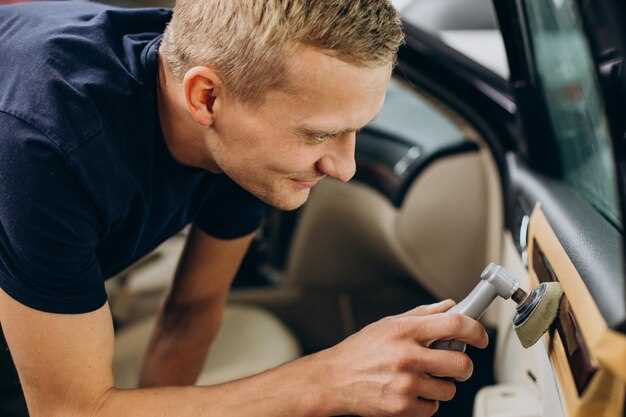
Dealing with a malfunctioning car window can be both frustrating and inconvenient. When your window doesn’t operate correctly, it can expose your vehicle to the elements, compromise security, and hinder your driving experience. Fortunately, repairing your car window mechanism is a manageable task that many vehicle owners can undertake with the right guidance and tools.
In this article, we will outline the essential steps needed to diagnose and fix common issues with your car window mechanism. Whether it’s a problem caused by a faulty motor, a broken regulator, or damaged wiring, each step will provide you with the necessary information to restore your window’s functionality. Understanding these processes will empower you to make informed repairs, saving you both time and money in the long run.
Before you begin, ensure you have all necessary tools and materials at hand, including screwdrivers, a socket wrench set, and possibly replacement parts. It’s also important to work safely and efficiently, adhering to any specific instructions for your vehicle’s model. With careful attention to detail and a methodical approach, you will soon find yourself equipped to tackle this repair head-on, bringing your window back to life.
Identifying the Symptoms of a Malfunctioning Window
Recognizing the symptoms of a malfunctioning car window is crucial for timely repairs and maintaining the overall functionality of your vehicle. Below are common indicators that your window mechanism may be failing:
- Window Gets Stuck: If the window does not move smoothly or appears to be jammed in the up or down position, this could indicate an issue with the window regulator or motor.
- Slow Operation: A window that moves slower than usual may be experiencing friction, electrical issues, or a failing motor. Pay attention to any delays in window movement.
- Unusual Noises: Listen for grinding, clicking, or popping sounds when operating the window. These sounds often suggest mechanical obstruction or damage within the window mechanism.
- Manual Override Issues: If the window can be moved manually but not through the electrical switch, it may indicate a faulty switch, wiring issues, or a dead window motor.
- Frequent Misalignment: If the window is misaligned or does not sit flush with the frame when closed, it could signal wear in the regulator or problems with the window track.
- Electrical Problems: Observe if the window operates inconsistently or does not respond at all when the switch is pressed. This may signal issues with the electrical system or bad connections.
If you experience any of these symptoms, it’s advisable to conduct a thorough inspection of the window mechanism. Early detection can save you from more extensive repairs later on.
Gathering the Necessary Tools for Repair
Before you begin repairing your car window mechanism, it is essential to have all the necessary tools at your disposal. This preparation not only streamlines the process but also ensures that you can tackle any challenges that arise during the repair. Below is a list of tools you will need, along with their purposes.
| Tool | Purpose |
|---|---|
| Screwdriver Set | Used to remove screws holding the door panel and window mechanism in place. |
| Socket Wrench Set | Essential for loosening and tightening bolts that secure the window motor and regulator. |
| Pliers | Helpful for gripping small parts or pulling out stubborn components. |
| Trim Removal Tool | Prevents damage when removing interior panels and trims around the window. |
| Tape Measure | Ensures precise measurements are made when aligning the window and mechanisms. |
| Replacement Parts | Includes new window regulators, motors, or any other components that may need replacement. |
| Flashlight | Illuminates dark areas inside the door panel, making it easier to see where to work. |
| Safety Gloves | Protects your hands from sharp edges and prevents injury during the repair. |
| Safety Glasses | Prevents debris from entering your eyes while working on the window mechanism. |
Having these tools ready will help ensure a smoother repair process. Take the time to gather each item before you begin, as this will minimize interruptions and help you focus on resolving the issue efficiently.
Removing the Door Panel Safely
Removing the door panel is a crucial step in repairing your car window mechanism. Follow these guidelines to ensure the process is safe and efficient.
- Gather Necessary Tools
Before starting, collect the following tools:
- Screwdriver set (flathead and Phillips)
- Trim removal tool
- Plastic prying tool
- Socket wrench set
- Safety gloves
- Towels or soft cloth
- Disconnect the Battery
Ensure safety by disconnecting the negative battery terminal. This prevents any electrical issues while working on the door panel.
- Identify and Remove Screws
Dismantling begins with locating all screws that secure the door panel. Look for:
- Visible screws along the edges of the panel
- Hidden screws under armrest pads or door handles
- Check any latch or lock mechanism for screws
Use an appropriate screwdriver to remove these screws and keep them in a safe place.
- Remove Clips and Fasteners
Many door panels are secured with plastic clips. Use your trim removal tool to gently pry the panel away from the door frame:
- Start from the bottom or one corner of the panel.
- Insert the tool and carefully pop the clips out, avoiding excessive force to prevent breaking them.
- Disconnect Wiring Harnesses
As you lift the panel, you may encounter wiring harnesses connected to switches and speakers. Follow these steps:
- Identify all harness connections.
- Press the release tab gently and pull the connector straight out.
- Carefully Remove the Panel
With all attachments disconnected, lift the panel upwards to detach it from the door frame. Hold the panel securely to avoid dropping it.
- Place the Panel Safely
Once removed, place the door panel on a soft surface or a towel to prevent scratches or damages while you perform the repairs.
Following these steps will help you safely remove the door panel while minimizing the risk of damaging your vehicle or its components.
Inspecting the Window Mechanism for Damage
To effectively repair your car window mechanism, the first crucial step is to thoroughly inspect it for any signs of damage. Begin by removing the door panel to access the window regulator and motor. Use a screwdriver or a socket wrench, depending on your vehicle’s configuration. Be cautious not to damage any clips or wiring during this process.
Once the door panel is removed, visually assess the window regulator. Look for any broken or bent components, such as cables or pulleys. These parts are often the main culprits behind window malfunctions. Also, check for signs of rust or corrosion, which can weaken the mechanism and impede its function.
Next, examine the power window motor. Listen for any unusual sounds when attempting to operate the window. Grinding or clicking noises can indicate that the motor is failing. Inspect the electrical connections to ensure they are secure and free from dirt or oxidation, which can disrupt the electrical flow.
Don’t forget to test the window itself manually. Gently try to push it up and down to identify any resistance or loose components. If the window moves only partially or gets stuck, this could signal a problem with alignment or additional mechanical failures within the assembly.
Document any findings, especially components that require replacement. This comprehensive inspection will provide valuable information for the repair process and help ensure all necessary parts are addressed for a complete fix.
Replacing or Repairing Broken Components
To effectively address issues with your car window mechanism, identifying and managing broken components is essential. Begin by dismantling the door panel to access the internal mechanisms. Carefully remove any screws and clips, taking care not to damage the panel itself.
Once you have access, inspect components such as the window regulator, motor, and any associated wiring. A damaged window regulator often manifests as difficulty in raising or lowering the window. If you notice any cracks or breaks, replacing the regulator is typically the best option. Most aftermarket options are reasonably priced and readily available.
The window motor may also be a culprit if the window does not respond at all. Use a multimeter to test for continuity; if the motor is faulty, it should be replaced. Ensure to unplug the motor before removing it, and follow the manufacturer’s instructions for installation.
For minor issues, such as misaligned tracks or loose cables, repair may be feasible. Adjust the tracks carefully to ensure that the window aligns properly when operating. Tighten any loose components that may be contributing to the malfunction. Use lubricant on moving parts to enhance performance and reduce friction.
After replacing or repairing broken components, reassemble the door panel and test the window functionality. Ensure everything operates smoothly before finalizing your repair. This step is crucial to confirm that all malfunctions have been addressed effectively.
Reassembling the Door and Testing the Window Functionality

Once you have completed the repair of the window mechanism, it is essential to reassemble the door properly. Begin by carefully aligning the door panel with the frame. Ensure that all wiring and clips are positioned correctly to prevent any damage. If the door features sound insulation or vapor barriers, make sure they are placed back in position.
Once the door panel is aligned, gently press down to secure it into place. Start reinstalling screws or bolts in the reverse order of disassembly. Tighten them firmly, but avoid over-tightening to prevent cracking the panel or damaging the clips.
After the door panel is secured, reconnect the battery terminals and test the window functionality. Turn on the ignition to initiate the vehicle’s electrical systems. Use the window switch to raise and lower the window a few times to ensure smooth operation. Listen for any unusual sounds that might indicate a problem with the mechanism.
During testing, pay attention to the window’s movement speed and alignment. If the window is sticking or operates irregularly, you may need to disassemble the door again to check for any misalignments or remnants of the previous issue.
Finally, inspect the seals around the window to ensure they are seated correctly, preventing wind noise and water leaks. Once everything is confirmed to function properly, finalize the assembly by installing any remaining components such as door handles or trim pieces.















